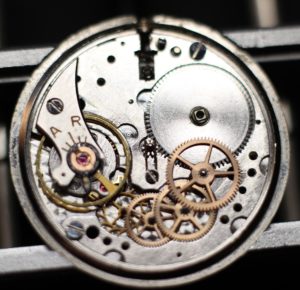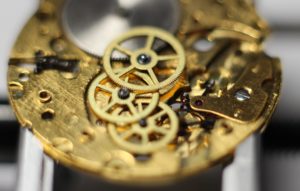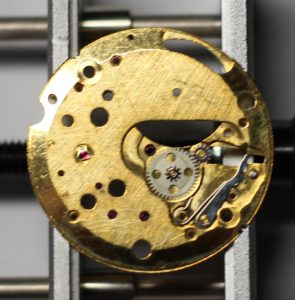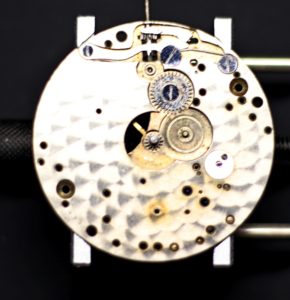To try to find out what in their design made ultra-thin movements possible, I focused on 3 examples: the Piaget 9P (2mm), the ETA/Peseux 7001 (2.5mm), and the Wilka (3mm). Unfortunately, I did not find any very specific design feature (except the Piaget’s layout) other than short staff and therefore more precise machining given the reduced tolerance to error.
The Piaget does not have a seconds hand and both the Peseux and the Wilka have subsidiary seconds, which simplifies the movement design and spares a few millimetres.
In the case of the Piaget, the centre wheel has been moved to the side so that it could be at the same level as the balance wheel (if left at the centre, they overlap). A central pinion carrying the minute hand is driven directly by the mainspring barrel. The Peseux and the Wilka both have very traditional gear train positions for movements with subsidiary seconds.
What all three have in common is the close vertical proximity of their wheels who all have very shorts staffs, as does the balance.

This leaves very little room for error and makes the movements vulnerable to dirt and shocks.
In both the Peseux and the Wilka, the base plate disappears in some places and part of the barrel is visible from the dial side.







